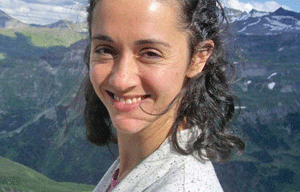Home is where the art is
Updated: 2011-10-29 08:05
By Zhang Zixuan (China Daily)
|
|||||||||
Zhang's 1988 triptych oil work Forever Lasting Love set a record when it sold for HK$79 million at Sotheby's Hong Kong Spring 2011 sale of The Ullens Collection - The Nascence of Avant-Garde China. His Bloodline: Big Family No 1 took the second place when it went for HK$65.6 million at Sotheby's Hong Kong's Oct 3 Contemporary Asian Art auction.
But the 53-year-old insists: "Those records have nothing to do with me."
He only made $2,000 when he sold Forever Lasting Love in 1989.
"The market is a new development artists must cope with," Zhang says.
"I don't believe the market is mature, with many buying but few holding on to their purchases."
To improve this situation, Chen founded the Annual Conference of Collectors of Chinese Contemporary Art in 2009. The event is meant to provide a platform for new and old buyers to exchange experience and knowledge.
Many longtime collectors, such as Wang Wei, suggest beginners monitor updates about artists - their works, shows and sales - and only buy pieces with clear origins and trade records.
She points out contemporary art is easier to authenticate than antiques, as most of the artists are still alive.
On Oct 18, Zhang posted a message on his Weibo micro blog, saying that the version of his 2000 oil painting Little Girl, advertised to go under the hammer at Beijing Tranthy Auction House's autumn sale, was a fake. The auction house apologized to Zhang and dropped the piece from its catalogue.
Tu says collectors can also turn to artists' family members seeking authentication.
At last month's Third Annual Conference of Collectors of Chinese Contemporary Art in Hunan's provincial capital Changsha, all Chinese collectors present agreed that a credible third-party evaluation body should be established. It should span fields of expertise, including fine arts, finance and auction operation, and its membership should be geographically diverse to avoid regional deviations, the conference decided.
The event's participants also examined collectors' social responsibility obligations.
The event's co-organizer, Tan Guobin, opened a private contemporary art museum in Changsha in 2004.
Beijing-based collector of contemporary realistic oil painting, Tang Ju, loans his collection to exhibitions and museums several times a year. Tang also plans to open a private museum to permanently showcase 100 of his purchases.
Lin, the Taiwan collector, is assessing museums and plans to donate his entire collection when he finds the right one.
In 2009, Wang and her husband - who are refocusing their goal towards buying more from artists born after 1980 - invested 200 million yuan to build the Long Art Museum. The 30,000-square-meter private venue, scheduled to open next October in Shanghai, will present around 4,000 works from their collection.
But, Wang says, hopeful exhibitors will have to wait longer.
"It's already booked until 2014."











